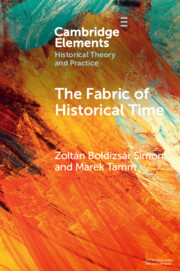Refine search
Actions for selected content:
3 results
3 - Exploitation
- from Part II - Working Environments: Extraction and the Making of Place
-
- Book:
- Burning Swamps
- Published online:
- 06 September 2025
- Print publication:
- 25 September 2025, pp 97-133
-
- Chapter
- Export citation

The Fabric of Historical Time
-
- Published online:
- 28 July 2023
- Print publication:
- 07 September 2023
-
- Element
- Export citation
Chapter 6 - Decolonizing Our Imagination
-
- Book:
- Archaeology, Nation, and Race
- Published online:
- 12 March 2022
- Print publication:
- 17 March 2022, pp 151-179
-
- Chapter
- Export citation
